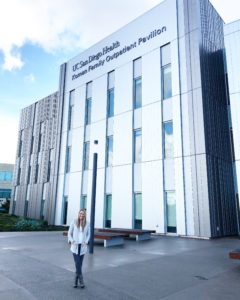As many of you already know I am a breast cancer survivor. I was first diagnosed in 2011 with a type of non-invasive breast cancer and underwent two lumpectomies in 2012. The diagnosis was life changing and I have done a lot of things since to change my diet and the products I use on my body and in my home as a result to try and prevent recurrence.
Cancer is one of those things that is out of our control in so many ways. But in an effort to empower myself, I want to do everything I can to prevent the cancer from returning. Anything I do have control over I set out to change. The changes I have implemented over the years may not be cure proof, but it makes me feel proactive in what I do makes a difference in my overall wellness and health.
According to the National Institute of Health, “only about 5-10% of breast cancer is hereditary.” To me, this means that some of the reasons why many of us are getting diagnosed with breast cancer is because of the toxins in our environment, food, cleaning, and beauty products.
One of my biggest powers of defense is to educate myself. I have researched so much on breast cancer and have read many books on the topic. I am not a medical doctor or a nutritionist**, but I have learned a lot when it comes to a nutritional approach to preventing cancer reoccurrence. One of my favorite books is called The Whole Food Guide for Breast Cancer Survivors: A Natural Approach to Preventing Recurrence by Edward Bauman, MED, PHD and Helayne Waldman, MS, EDD.
Below are some main tips I have learned from the book and a sample diet that I try to implement on a regular basis. Whether you are a cancer survivor or not, you can easily implement these changes in your diet to try and prevent cancer from ever attacking your body in the first place. If anything, you will be healthier nonetheless as there are so many benefits to these nutritional changes.
One of my favorite parts of the entire book are these words, “smile, play, celebrate, and cherish your precious body,” (pg. 108)
-Increase daily exercise – According to The Whole Food Guide, “regular exercise of any type cuts your risk of developing the disease and prevents a recurrence” and “exercise is also effective for reducing estrogen levels.” (pg. 86). Higher estrogen levels fuel cancerous cells in our bodies. According to the Journal of Clinical Oncology, “increased physical activity combined with a healthy diet was associated with an approximately 50% reduction in mortality in breast cancer patients.” Plus exercise will help increase your immune system and also decrease heart disease and osteoporosis as well as cancer.
-Limit Sugar, Carbohydrates, and Alcohol – cancer feeds off of these things in our bodies
-Limiting and or Eliminating Iron, Copper, and Mercury – cancer feeds from these metals
-Only eat organic eggs, meat, chicken, fruits, and vegetables – non organic foods contain hormones and antibiotics that are harmful to our bodies
-Increasing Iodine, Vitamin-D, and Selenium – These help boost my immune system (plus iodine has been linked as “one of the most essential nutrients for breast health” – Dr. David Brownstein (2008) – Author of Iodine: Why You Need it, Why You Can’t Live Without It. You can take supplements and or get it naturally in foods like sea vegetables, yogurt, organic milk, eggs, fish, and shellfish. It is important you get tested by your doctor and make sure it’s ok to take iodine because there can be health complications if you have an autoimmune thyroid disease.
-Increasing Cruciferous vegetables – for gut and liver health (cabbage, broccoli, cauliflower, Brussel sprouts, etc)
-Increase Alkaline foods, decrease acidic foods – cancer thrives in an acidic environment (pH of 6.8 or lower) but is halted by a pH of 7 or higher) You can test your pH levels each morning with over the counter strips. To order the ones I use click here!
-Increase drinking Green Tea
-Increase Zinc, Magnesium, and Vitamin C
-Increase nuts and avocados
Two other books I highly recommend is The Green Beauty Guide: The Effects Synthetic Products Have On Your Organic Makeup, Moisturizers, and Hair Care by Julie Gabriel and Better Basics for the Home: Simple Solutions for Less Toxic Living by Annie Berthold-Bond.
Many of us know not to use deodorant with aluminum and or that Formaldehyde, found in nail polish, is a known human carcinogen liked to many cancers but how closely do you look at the ingredients in your shampoo and moisturizers? Did you know that Laureth-7, a very common ingredient in both types of beauty products, can be linked to cancer? In fact, the author urges readers to stay away from any products that contain the last three letters “eth” in them such as sodium laureth sulphate, oleth, myreth, ceteareth, and PEG (polyethylene glycol) that may test positive to 1,4-Dioxane – a dangerous chemical linked to cancer (pg. 15). Even if your products claim to be organic or or eco-friendly, look closely! And if you find these ingredients, I strongly suggest throwing them away and replacing them with a less toxic product!
The author of The Green Beauty Guide lists 100 ingredients to stay away from when using beauty products as well as healthier alternatives. I guarantee you will be shocked and most likely have these toxic chemical ingredients in the skincare, haircare, makeup, and fragrances in your home that are linked to various diseases including cancer. You can also use EWG’s Skin Deep app/website to see how toxic your beauty and baby products are in over 70,000 products in their database.
Dr. Kim’s Sample Diet
Drinks:
-Green Tea
-Whey protein mixed with water or in a smoothie
-Alkaline water with a slice of lemon, cucumber, and berries (either raspberries, blackberries, strawberries, or pomegranate)
Breakfast:
Avocado Toast with a dash of Flax Seed and Cinnamon
Oatmeal with a teaspoon of Flax Seed and a dash of Cinnamon
Snacks:
Dry Seaweed
Brazil Nuts
Almonds
Sliced organic apples
Walnuts
Train Mix
Sweet Peppers and or Celery with Hummus
Chopped carrots with Yogurt Ranch
Lunch:
Salad with Kale, Spinach, Quinoa, shredded carrots, cucumber, beets, walnuts, almonds, flax seed, chia seed, diced red onion, diced red, green and yellow peppers, shredded cheese, and balsamic vinaigrette
Seaweed Salad and sushi
Dinner:
Tofu with brown rice, broccoli, cauliflower, garlic, and peanut sauce
Gluten Free quinoa pasta with shrimp, sun-dried tomatoes, goat cheese, and zucchini
Dessert:
Dark Chocolate
Here’s to better health for you and me!
**For advice from a medical doctor and or nutritionist, please speak to your primary family health physician or pediatrician.







Leave a Reply